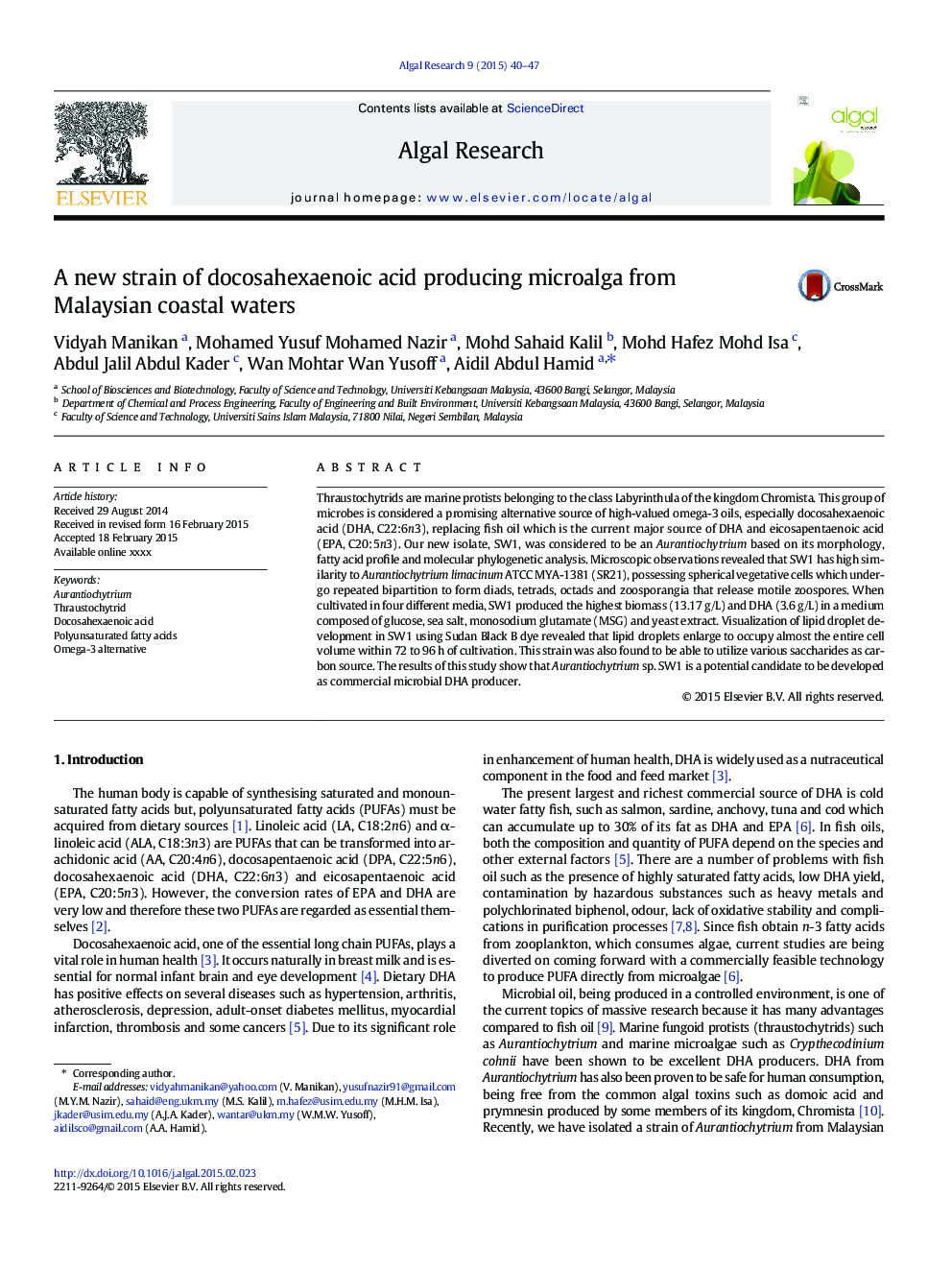| کد مقاله | کد نشریه | سال انتشار | مقاله انگلیسی | نسخه تمام متن |
|---|---|---|---|---|
| 8088183 | 1521823 | 2015 | 8 صفحه PDF | دانلود رایگان |
عنوان انگلیسی مقاله ISI
A new strain of docosahexaenoic acid producing microalga from Malaysian coastal waters
ترجمه فارسی عنوان
یک سویه جدید از اسید داکوزاگزنئوئیک تولید مایکروالگا از آبهای ساحلی مالزی
دانلود مقاله + سفارش ترجمه
دانلود مقاله ISI انگلیسی
رایگان برای ایرانیان
کلمات کلیدی
موضوعات مرتبط
مهندسی و علوم پایه
مهندسی انرژی
انرژی های تجدید پذیر، توسعه پایدار و محیط زیست
چکیده انگلیسی
Thraustochytrids are marine protists belonging to the class Labyrinthula of the kingdom Chromista. This group of microbes is considered a promising alternative source of high-valued omega-3 oils, especially docosahexaenoic acid (DHA, C22:6n3), replacing fish oil which is the current major source of DHA and eicosapentaenoic acid (EPA, C20:5n3). Our new isolate, SW1, was considered to be an Aurantiochytrium based on its morphology, fatty acid profile and molecular phylogenetic analysis. Microscopic observations revealed that SW1 has high similarity to Aurantiochytrium limacinum ATCC MYA-1381 (SR21), possessing spherical vegetative cells which undergo repeated bipartition to form diads, tetrads, octads and zoosporangia that release motile zoospores. When cultivated in four different media, SW1 produced the highest biomass (13.17Â g/L) and DHA (3.6Â g/L) in a medium composed of glucose, sea salt, monosodium glutamate (MSG) and yeast extract. Visualization of lipid droplet development in SW1 using Sudan Black B dye revealed that lipid droplets enlarge to occupy almost the entire cell volume within 72 to 96Â h of cultivation. This strain was also found to be able to utilize various saccharides as carbon source. The results of this study show that Aurantiochytrium sp. SW1 is a potential candidate to be developed as commercial microbial DHA producer.
ناشر
Database: Elsevier - ScienceDirect (ساینس دایرکت)
Journal: Algal Research - Volume 9, May 2015, Pages 40-47
Journal: Algal Research - Volume 9, May 2015, Pages 40-47
نویسندگان
Vidyah Manikan, Mohamed Yusuf Mohamed Nazir, Mohd Sahaid Kalil, Mohd Hafez Mohd Isa, Abdul Jalil Abdul Kader, Wan Mohtar Wan Yusoff, Aidil Abdul Hamid,
